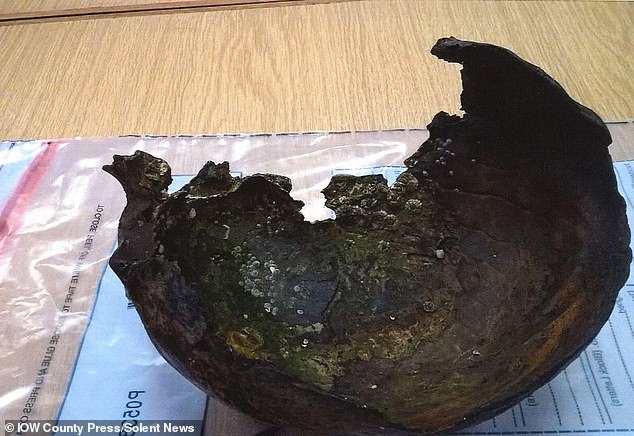Old Football Found On Beach Turns Out To Be An Iron Age Skull
Image kicking what you thought was part of an old football during a stroll on the beach – only to discover it was actually part of a human skull. That’s what happened to Anthony Plowright.
He was walking his two dogs on the beach near Binstead on the Isle of Wight when he discovered what turned out to be the upper part of a human skull, called the cranium.
The Isle of Wight coroners office sent the dark brown remains for carbon dating and discovered it was about 2,800 years old.


The skull was discovered on the 4th of June 2018 but the Isle of Wight Coroner, Caroline Sumeray has only just released her findings.
The carbon dating puts the cranium as belonging to someone who would have lived in the early Iron Age – between about 800BC and 540BC.
Mr Plowright said: ‘I thought it was part of an old football when I first saw it and so I booted it down the beach. I soon realised it wasn’t a ball.
‘I put it in a bag and took it home and emailed the police to tell them I had found it.’
‘I had absolutely no idea it was that old.’
The skull has been donated to the Isle of Wight Museum Service who say they are looking forward to studying it.
During the Iron Age, the people of the Isle of Wight were already trading with nearby communities through maritime links.
‘Recent discoveries suggest that the inhabitants of the Isle of Wight engaged in wider maritime activity within the Solent from prehistoric times, according to Stephanie Smith from the British Museum.
‘By the Iron Age and Roman periods, the Island was part of a vast maritime network of interaction between coastal southern Britain and the Continent, extending as far as the Mediterranean.’






